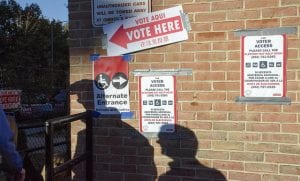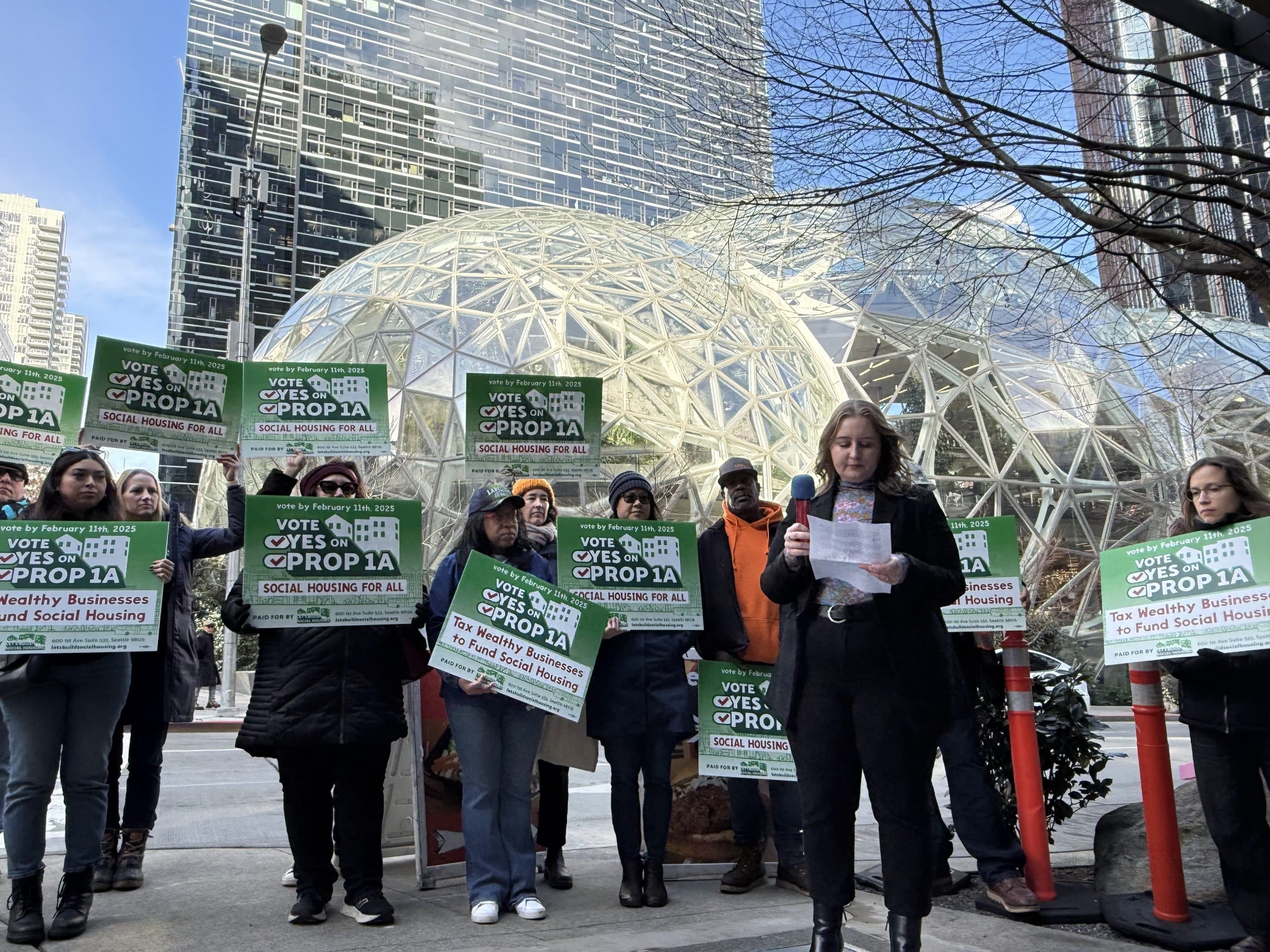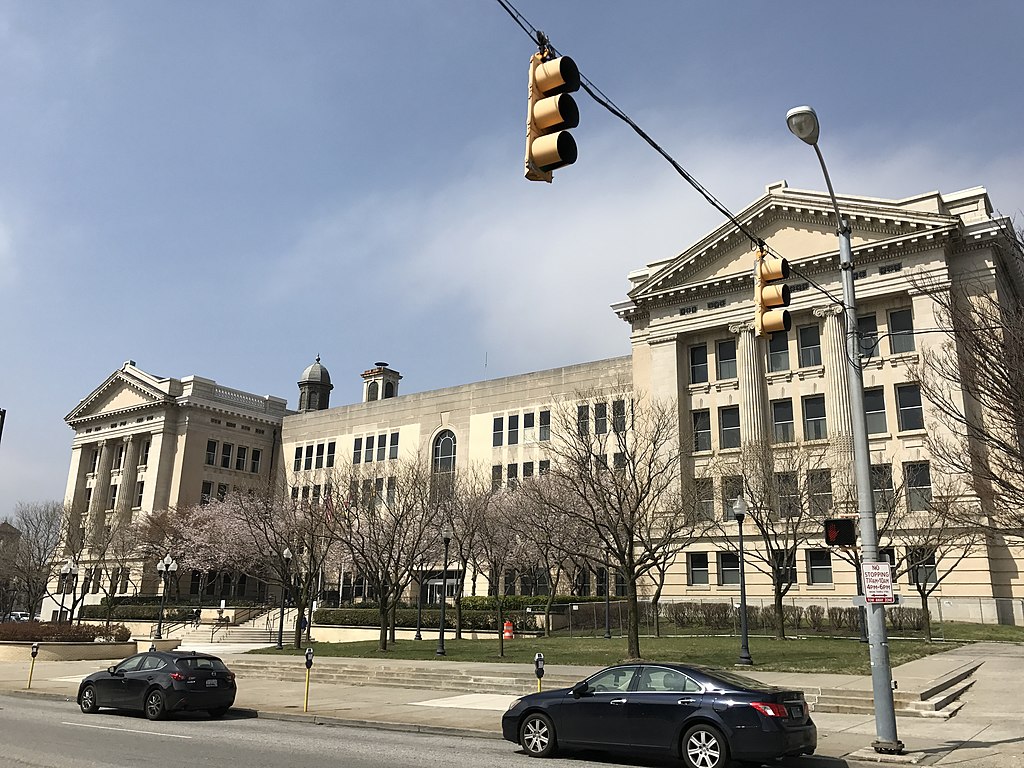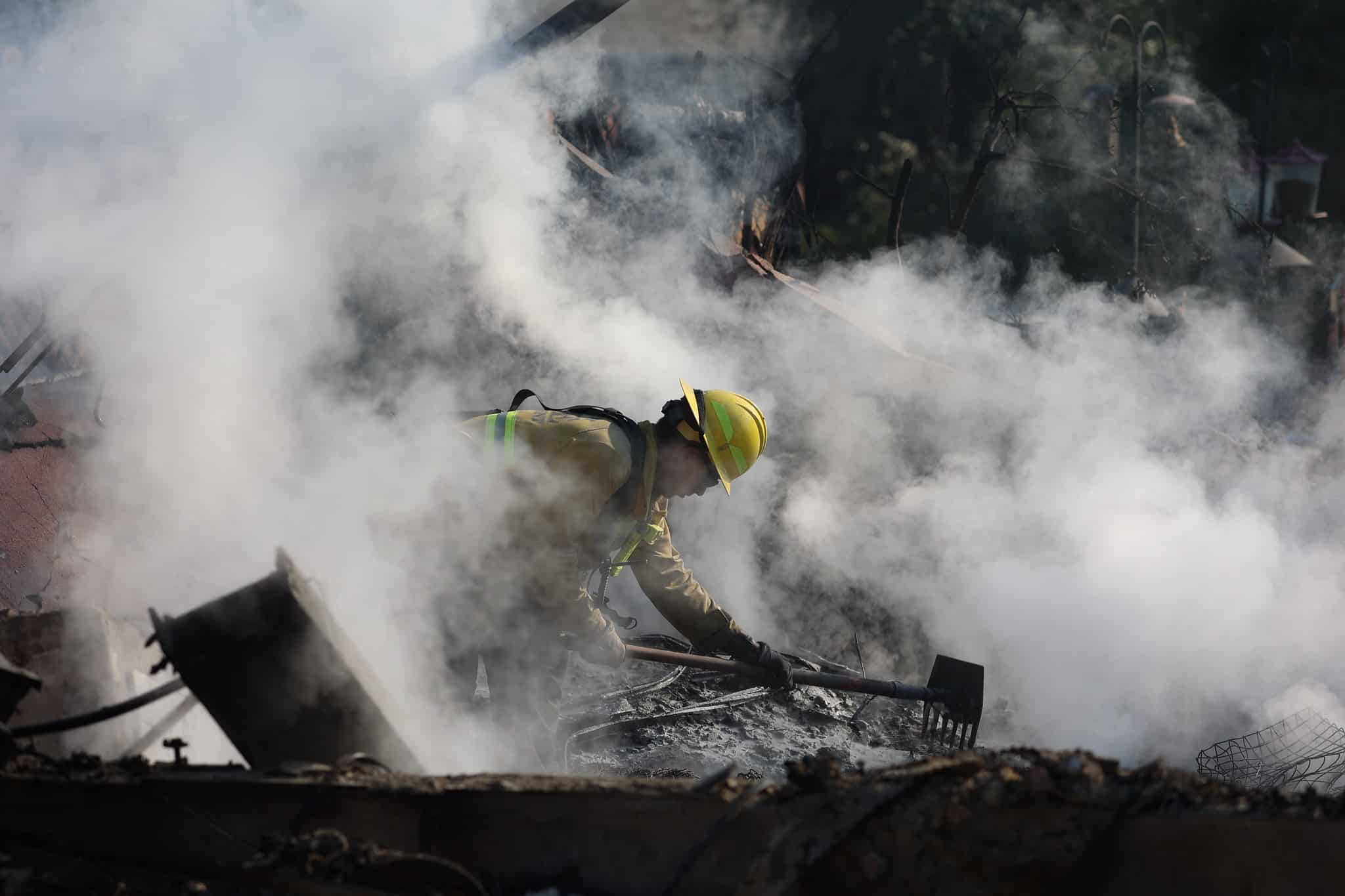
Photo by Tim Brown/ IIP Photo Archives via flickr, CC BY-NC 2.0
An October 2017 study by Freddie Mac compared rent increases at 100,000 individual apartments it financed, documenting a 60 percent loss of affordable homes between 2010 and 2016. The losses were largely in the private rental market. In a subsequent Washington Post article, the head of Freddie Mac Multifamily said, “affordable housing without a government subsidy is becoming extinct. More renters have flooded the market after people lost their homes in the housing crisis. The apartment vacancy rate was 8 percent in 2009, compared to 4 percent in 2017. That trend coupled with a stagnant supply of apartments resulted in increased rents.”
The Great Recession overwhelmed communities throughout the country with foreclosures, forced evictions and relocations, loss of ownership, and loss of wealth. Financial institutions and investment groups are now buying up foreclosed single-family homes and renting them. Renters are struggling for stability as rents rise ever higher though incomes continue to stagnate and housing assistance need overwhelms what is available.
Despite the extent of the strain housing prices impose on millions of Americans, an organized electoral constituency for affordable housing does not exist. Housing advocacy work is largely led by professionals from for-profit and nonprofit housing developers and intermediaries, community development corporations, the social services sector, and the national, state, and local housing associations.
But electoral activism is critical for advocacy. A coordinated, grassroots electoral program targeting residents of low- and moderate-income, publicly owned and assisted-, and private-rental housing is needed to drive changes in public policy and spending.
Significantly, a coordinated national grassroots organizing program with huge potential is developing. It has included creative tenant organizing, but the advocacy has most often been limited to traditional and grassroots lobbying, legal, and protest actions. These efforts can be effective but do not typically achieve the scale needed to drive broad changes. Electoral activism is not generally practiced in the affordable housing world and when it is it can be confined only to soft nonpartisan activities or be segmented by neighborhood and demography. In Congress and across most of the country, elected officials remain largely immune to electoral consequences for failing to address the housing crisis.
Public policies and programs do not address the pressing needs of low- and moderate- income people for stable and affordable housing options, nor the systemic and regulatory problems in the housing finance sector that plague all but the wealthiest Americans (witness Trump’s proposed housing budget). Without a deeper electoral strategy to complement the growing grassroots mobilization, the affordable housing crisis will persist.
Affordable Housing Needs an Organized Electoral Constituency
A 2016 poll by Hart Research Associates commissioned by The MacArthur Foundation found that 81 percent of Americans “believe that housing affordability is a problem in America today.” Two-thirds thought that the housing crisis persists, with 19 percent believing that “the worst is yet to come.” Details in the poll indicated that the views were held among a broad cross section of Americans.
A significant opportunity exists. A diverse constituency for greater public and private action to address housing hardships needs to be mobilized into political action. The 2018 and 2020 election cycles present a significant opportunity to engage in a multi-year, district, city, and state-based electoral program targeting residents of private rental housing and nonprofit and government-owned and assisted housing.
A Constituency in Waiting
Communities are good access points to reach and engage low- and moderate-income people in organizing and politics.
Subsidized and public housing are home to a diverse cross-section of low-wage workers, elderly, immigrant, infrequent, and surge voters who depend on the government for basic supports. Residents of these communities have a significant basis for solidarity and collective action. Rental housing owned or subsidized by the government provides ready-made issues for political engagement including affordability, public funding, fair housing, and the rights of renters.
These communities are distributed across the country in many areas where votes for government programs are scarce. Though voter participation is often low, a significant portion of this population is elderly. Elderly households are particularly important because seniors generally vote at a higher rate than other households, and they vote in lower turn-out state and local elections where their share of the electorate is even greater. Using the Preservation Database, I identified Section 202 Senior Housing properties in every congressional district but 4. (The database was updated after I did my original 202 tally and the modifications changed how many 202 properties can be identified.)
In my home state of Massachusetts, not including any private rental housing, there are upwards of 300,000 households in the nonprofit, federal, and state government-assisted and publicly owned housing sectors that could be activated as an electoral constituency for affordable housing.
In private rental housing live a wide cross-section of people with low and moderate incomes, middle-class households, students, singles, and families. Rents continue to rise, supply is short, and displacement is widespread. Evictions disrupt lives and can lead to homelessness. Overcrowding and illegal units are common and conditions pose hazards to the tenants. The opportunities for issue organizing and mobilization are numerous, opportunities that need to be developed electorally.
A Housing Voter Program
Engaging in elections is critical for renewing and sustaining public policies and programs for affordable housing. So what’s the electoral program? There are four general components:
- Building the List
- A database of people living in government subsidized and public housing, and nonprofit and private rental housing allows for better targeted work at a greater scale than exists. This is an asset for use in advocacy and electoral campaigns and should be accessible to 501(c)(3) and 501(c)(4) organizations, ballot, and nonpartisan electoral campaigns. Lists that model whether a household rents or owns are not refined enough for strategic targeting by housing advocates.
- To create the database, property addresses first need to be compiled. This can be done using various existing databases, and is likely to require some local legwork. Freedom of Information Act requests may also be a viable option to obtain residential addresses for public and government-assisted housing, but they cannot include resident names. Assessors’ lists can be used for private rental housing. The list of addresses would then be matched with the appropriate voter files. Voter list matching is a widespread and standard practice for advocacy.
- The matched list can be housed with a vendor and managed with appropriate oversight and rules for access and use. Vendors typically used by social and economic justice organizations include Catalist and TargetSmart, and the voter contact management software service is generally the VAN, or Voter Activation Network.
2. The Voter Engagement Program
- The basic program is a simple voter contact and turnout effort by nonpartisan
501(c)(3)s and/or 501(c)(4)s and can include social media, leaflets, direct mail, and phone banks. Contact including door knocking, candidate forums, town halls, and other labor intensive efforts can of course be done as resources allow. Good examples of district-based grassroots programs are the Indivisible model and Affordable Care Act campaign. - This program can be implemented at different scales and employed in select states, districts, or cities. A program at modest scale, designed strategically, can have a significant impact. An initial federal effort could start in a small set of three to five congressional districts in three to five states and build incrementally.
- It’s very powerful to bring in monetary support by identifying and publicizing campaign contributions from real estate firms, landlords, and financial interests to candidates for public office along with the candidates’ policy positions (or housing voting record for incumbents).
3. Organization
- A voter program is an excellent coalition-building program and can be performed by 501(c)(3)s, 501(c)(4)s, and 527 organizations and political action committees (PACs). 501(c)(3)s can conduct only nonpartisan programs.501(c)(4)s can conduct nonpartisan voter programs with greater issue-based contrast content, can inform their members who to vote for, and can form a related PAC to endorse and promote candidates to the general public. Standalone PACs can endorse and promote candidates.
4. Funding
There are two streams of funding needed: first via the data infrastructure, and then via engagement program operations.
- Funds for the data infrastructure would support creation of the property address database including address collection and compilation, data formatting, and processing the list match with the voter file.
- Funds for program operations would support organizations’ use of the database for outreach, education, and engagement of a grassroots housing constituency.
- (Additional resources will be needed for any 501(c)(4) or PAC activity.)
In sum, a housing voter program is critical for housing advocacy. To turn the tide toward solutions for millions of Americans struggling to secure or sustain an affordable and decent place to live, housing advocates and funders need to develop a coordinated city, state, and district-based housing voter program with the power to drive changes in local, state, and federal public policies and spending.
A Massachusetts Example
From 1981 to 1995, the Massachusetts Tenants Organization operated a tenant rights education and counseling program, conducted direct-tenant organizing, carried out city and state legislative campaigns, and ran an electoral program. It worked with a 501(c)(3) counseling and organizing group (Mass Tenants Resource Center), a 501(c)(4) membership organization (MTO) for legislative advocacy, and two PACs: the Boston Tenants Political Organization and Mass Tenants Political Caucus.
I was Boston organizer and then executive director of MTO from 1987 to 1991, and in 1987 myself and other MTO staff and volunteers compiled a database of the addresses of rent-controlled properties in Boston and matched the addresses with the registered voter file. We entered 90,000 property addresses by hand into a text file on a Wang PC, and a massive list of tenant voters was created.
The Boston PAC 1) researched and publicized landlord and developer campaign contributions to city council and mayoral candidates that generated news coverage; 2) endorsed a slate of candidates, dubbed the “Tenant Ticket;” 3) mailed endorsements with poll cards to tenant voters along with a copy of a newspaper article on endorsements; and 4) placed volunteers at tenant-heavy voting sites to hand out poll cards, which is allowed in Massachusetts.
The results were powerful—electing a pro-tenant city council majority that paved the way for passage of legislation protecting expiring-use affordable rental housing, and strengthening rent, eviction, and condominium conversion protections.
Sadly, the real estate industry ultimately eliminated rent control, just-cause eviction, condo conversion protections, and other policies by mounting a state ballot campaign in 1994 to eliminate the authority of Boston, as well as Brookline and Cambridge to regulate rents and evictions.
Though the tenant movement did not have the resources to reach the scale needed to defeat the statewide ballot measure, the integrated MTO program remains an effective model for electoral activism.




In my opinion, to create elective change you need voters or dollars; if you can have both, so much the better, but those that are being affected the most are the people who can least afford to donate to elective causes. Therefore, what is needed most is more vested-interest, organized voters. Whether it is payday lending (though the debt-trap industry moved snake-like to other licensing to usurp the Ohio voters), inclusionary zoning, or other policies that promote financial resiliency and housing that is affordable for all, an organized, issue-educated voter could be an effective tool to address an unjust economy.
And in case there needs to be an example of moving in the right direction, check out what the Gund Foundation is doing in Northeast Ohio here: https://www.insidephilanthropy.com/home/2017/12/5/heres-another-alarmed-foundation-thats-making-new-grants-to-bolster-civic-participation